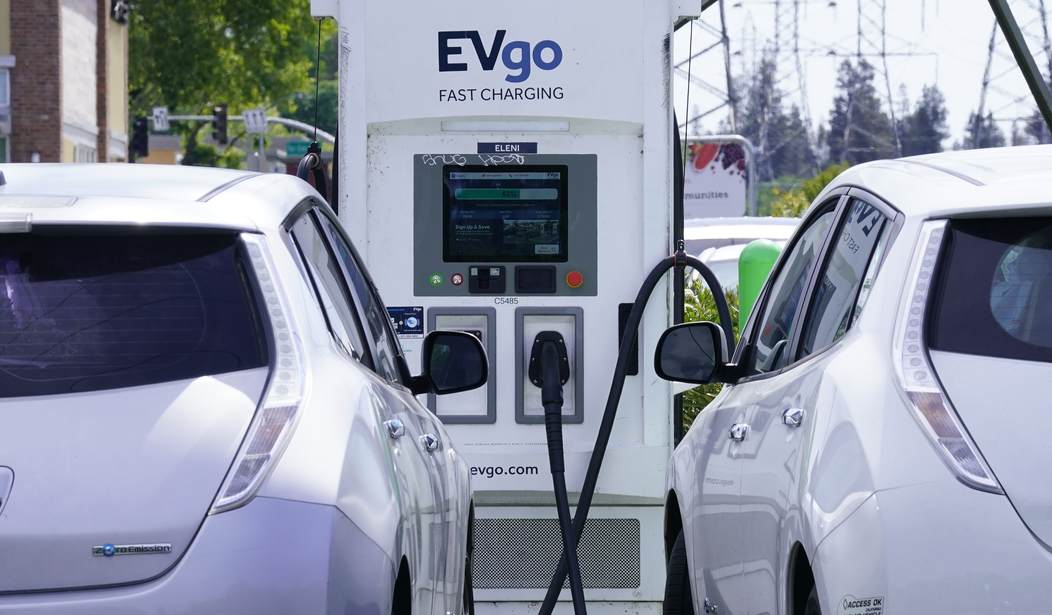Many have long cautioned lawmakers - namely those in the Biden administration - against the forceful adoption of solar, wind, and electric vehicles due to their lofty costs, unreliability, and adverse environmental impacts.
Democrats have largely downplayed criticism and, instead, restored to gaslighting their way into enacting, with urgency, the forceful transition to solar, wind, and electric vehicles to fight the “climate crisis.”
The Green New Deal-lite “Inflation Reduction Act”, passed in the summer 2022, promised billions of “incentives” to spur investment in so-called clean energy technologies and projects. A year later, all those lofty promises of decarbonizing our grid and our vehicle fleet - unsurprisingly - fizzled out and, insulted, have resulted in greater unreliability and energy insecurity.
Offshore Wind Can’t Be Saved
The most recent positive development to derail the Biden administration’s goal of dispatching 30 gigawatts of offshore wind power by 2030 came with the announcement of Orsted, a Danish wind giant, canceling two offshore projects in New Jersey.
Recommended
Recent cancellations - including these two New Jersey projects - amount to stopping “nearly one-fifth of President Joe Biden’s goal of 30 gigawatts of offshore wind power by 2030.” This means the U.S. will fail to meet its 2030 goal. That is good news for our oceans, marine life, and beach communities.
The company cites inflation, supply chain issues, and insufficient federal subsidies as factors that imperiled their projects. In 2023 alone, Orsted’s stock is down 60%.
One financial analyst issued this dire warning about wind’s profitability going forward: “The wind power sector has stalled, with virtually no companies in the industry now turning a profit.” And analyst and former clean energy advocate Brian Gitt, tweeted, “In 2021, Biden announced a target of 30 gigawatts (GW) of offshore wind power capacity by 2030. The gap between wishful thinking & reality is obvious now. Over 50% of US offshore wind power contracts have been canceled or are at risk of cancellation.“
“Ørsted has taken the decision to cease the development of the Ocean Winds 1 and 2 projects,” the company announced. “This is a consequence of additional supplier delays further impacting the project schedule and leading to an additional significant project delay. In addition, Ørsted has updated its view on certain assumptions, including tax credit monetization and the timing and likelihood of final construction permits. Finally, increased long-dated US interest rates have further deteriorated the business case.”
Six Northeastern Democrat governors r– along with Orsted - are begging the Biden administration for a bailout and hiking IRA subsidies to cover 50% of offshore wind development costs.
“Absent intervention, these near-term projects are increasingly at risk of failing,” the governors said in a statement to Associated Press. “Without federal action, offshore wind deployment in the U.S. is at serious risk of stalling because states’ ratepayers may be unable to absorb these significant new costs alone.”
California Curtailing Renewable Power - Especially Solar
On Halloween, the Energy Information Administration (EIA) reported that the California Independent System Operator (CAISO) - an Independent System Operator operating in the Golden State - is curtailing clean energy power—namely solar— due to the “increased congestion” of these sources.
EIA said, “In 2022, CAISO curtailed 2.4 million megawatt hours (MWh) of utility-scale wind and solar output, a 63% increase from the amount of electricity curtailed in 2021. As of September, CAISO has curtailed more than 2.3 million MWh of wind and solar output this year. Solar accounts for almost all of the energy curtailed in CAISO—95% in 2022 and 94% in the first seven months of 2023. CAISO tends to curtail the most solar in the spring when electricity demand is relatively low (because moderate spring temperatures mean less demand for space heating or air conditioning) and solar output is relatively high.”
As I noted at IWF this week, Congestion results from “a higher demand and a lack of supply to meet said demands. Unsurprisingly, congestion-related curtailments—especially those involving solar—have drastically increased since 2019. Curtailment of solar, in this case, usually occurs in spring when electricity demand is significantly lower…”
I added, “As recently as April 2023, the agency curtailed a whopping 703,000 megawatts of electricity. And the previous April, it was reported over 596,000 megawatts of electricity were cut.
E.V.s Won’t Ever Be Ready for Primetime
Let’s not kid ourselves: Organic, widespread EV adoption is never happening.
An April 2023 Gallup poll found the majority of Americans won’t ever buy one, while a July 2023 Pew Research Center survey found a greater share – 63% of Americans – will never buy nor are ever likely to buy an EV.
The Texas Public Policy Foundation (TPPF) published a new study detailing the true costs of EVs and found, minus subsidies and perks, the cost totals about $50,000–about $4,600 more than a standard gas-powered car. More concerning, the hidden costs of fueling an EV amounts to a whopping $17 per gallon. (I’ll keep my gas-powered, environmentally-friendly Subaru Forester, thank you very much.)
Manufacturers who followed along are finally conceding defeat here.
GM and Honda are scrapping a joint “affordable” EV venture. Ford Motor Company said it lost $37,000 on EVs sold in the last three months. And Mercedes said EVs are “a pretty brutal space” to occupy today.
Conclusion
Everything Bidenomics touches collapses and crumbles – including its beloved “clean energy” industries and projects.
The market has clearly spoken: forcibly scaling up solar, wind, and EVs is unsustainable, costly, and impractical.

























